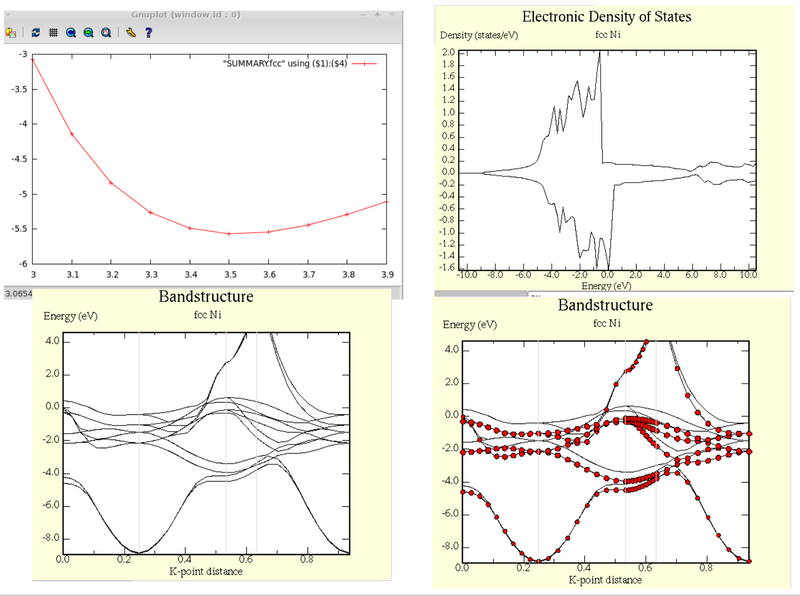Fcc Ni: Difference between revisions
| Line 52: | Line 52: | ||
[http://www.vasp.at/vasp-workshop/examples/fccNi.tgz fccNi.tgz] | [http://www.vasp.at/vasp-workshop/examples/fccNi.tgz fccNi.tgz] | ||
---- | ---- | ||
[[ | [[VASP tutorials|To the list of examples]] or to the [[The_VASP_Manual|main page]] | ||
[[Category:Examples]] | [[Category:Examples]] | ||
Revision as of 11:08, 4 July 2017
Overview > fcc Si > fcc Si DOS > fcc Si bandstructure > cd Si > cd Si volume relaxation > cd Si relaxation > beta-tin Si > fcc Ni > graphite TS binding energy > graphite MBD binding energy > graphite interlayer distance > List of tutorials
Task
Lattice parameter optimization, calculation of the DOS and bandstructure in (spin-polarized) fcc Ni.
Input
POSCAR
fcc: 3.53 0.5 0.5 0.0 0.0 0.5 0.5 0.5 0.0 0.5 1 cartesian 0 0 0
INCAR
SYSTEM = fcc Ni ISTART = 0 ; ICHARG=2 ENCUT = 270 ISMEAR = 1 ; SIGMA = 0.2 LORBIT = 11 ISPIN = 2 MAGMOM = 1
- Initial charge-density from overlapping atoms in starting job.
- Default energy cutoff of 270 eV used (ENCUT=270).
- MP smearing used since we have a metal.
- Spin-polarized calculation ISPIN=2, initial moments of 1 (MAMOM=1).
- Static calculation.
KPOINTS
k-points 0 Monkhorst Pack 11 11 11 0 0 0
- Equally spaced k mesh with 56 points in the IBZ.
- Odd, -centered mesh.
Calculation
- The calculations are carried out in analogy to cd Si. Please follow the instructions in that example.
- Here is a sample output of the results:
Download
To the list of examples or to the main page


